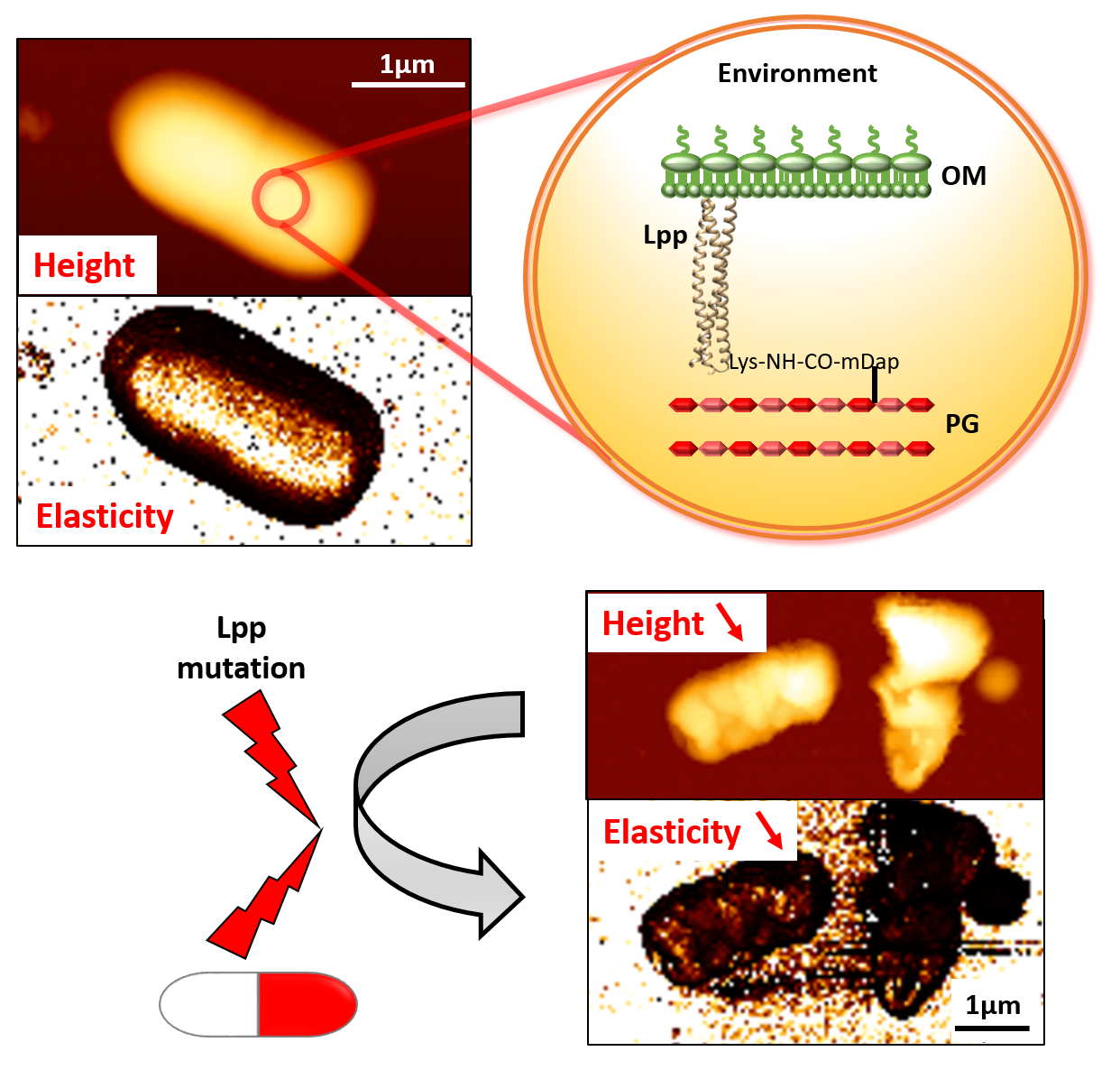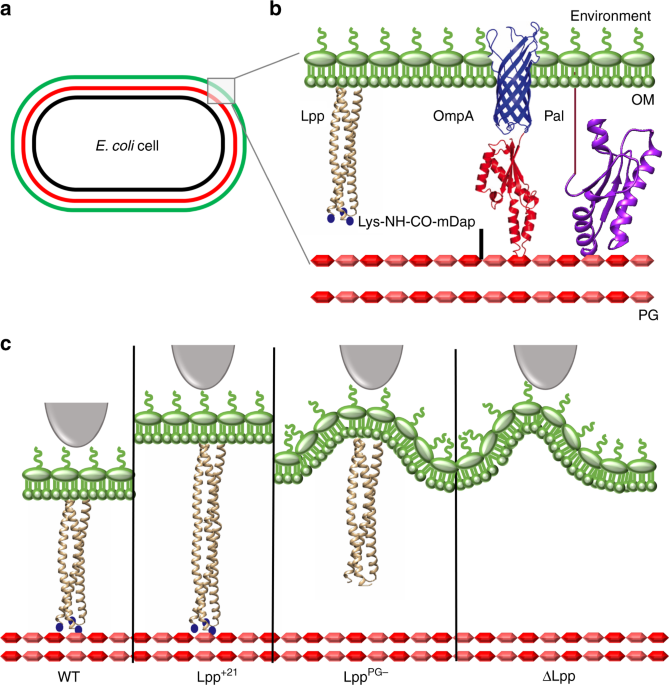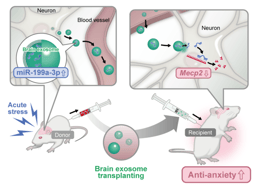Despite their apparent simple organization - namely an envelope separating the inside of a single cell from the outside - bacteria have evolved a plethoric set of tools to colonize and even infect their host cells. The light side chosen by commensal bacteria that act in symbiosis with human system is counter balanced by the dark side of some pathogenic super-bacteria that dare to develop antibiotic-multiresistance and threaten to become a leading worldwide cause of death. These microbes are characterized by a powerful shield, essential for their viability, integrity and potential pathogenicity: a structurally and functionally complex cell envelope. In the case of the well-known Gram-negative bacteria Escherichia coli, the envelope is made up of an inner and an outer membrane (IM and OM), separated by a peptidoglycan layer (PG) (1). It has long been thought that PG is the only load-bearing element of Gram-negative bacteria, also being the site of action of most antibiotics. However, recent research has pointed out the major role of the OM in antibiotic resistance and infection, through its mechanical function (2). Especially, Rojas et al. highlighted the importance of protein interconnections between the envelope layers (2). Among those, the Braun’s lipoprotein Lpp, which is critical for stress transmission and signaling, tethers covalently the OM and the PG, subsequently determining the size of the periplasm (3).
Our idea then was to investigate the role of Lpp in defining bacterial mechanics, using single-cell experiments. Following the popular quote “May the force be with you”, we pushed on the bacterial enemy with a force-sensitive weapon, the atomic force microscope (AFM) (4). AFM enabled us to image single live cells with nanometer resolution while quantifying the envelope rigidity. Combining these mechanical measurements with genetic manipulation we unraveled the dual role of Lpp in defining cell envelope stiffness. Removing the covalent anchorage to PG or increasing the Lpp molecular length lead to significant cell softening, similar to the effect obtained when Lpp was deleted from the bacteria. Moreover, we found that while wild-type E. coli cells are rather insensitive to certain antibiotic treatments (e.g. vancomycin), bacteria expressing any of the Lpp functional mutations become drastically susceptible to such drugs.

Our discoveries represent a milestone in understanding how tiny biomolecules play such a crucial role in defining bacterial cell stiffness and integrity. Undoubtedly, AFM offers exciting opportunities to further explore how these life-threatening microbes develop their virulence, and how to efficiently eradicate them. We, well-trained jedi, propose a way to contribute to the design of innovative antibacterial drugs that will disrupt the cell envelope by targeting the Lpp-dependent mechanical properties.
1. Silhavy, T. J., Kahne, D. & Walker, S. The Bacterial Cell Envelope. Cold Spring Harb. Perspect. Biol. 2, a000414 (2010).
2. Rojas, E. R. et al. The outer membrane is an essential load-bearing element in Gram-negative bacteria. Nature 559, 617–621 (2018).
3. Asmar, A. T. et al. Communication across the bacterial cell envelope depends on the size of the periplasm. PLOS Biol. 15, e2004303 (2017).
4. Xiao J, Dufrêne YF. 2016. Optical and force nanoscopy in microbiology. Nat Microbiol 1:16186.
Follow the Topic
-
Nature Communications

An open access, multidisciplinary journal dedicated to publishing high-quality research in all areas of the biological, health, physical, chemical and Earth sciences.
Related Collections
With Collections, you can get published faster and increase your visibility.
Women's Health
Publishing Model: Hybrid
Deadline: Ongoing
Advances in neurodegenerative diseases
Publishing Model: Hybrid
Deadline: Dec 24, 2025






Please sign in or register for FREE
If you are a registered user on Research Communities by Springer Nature, please sign in